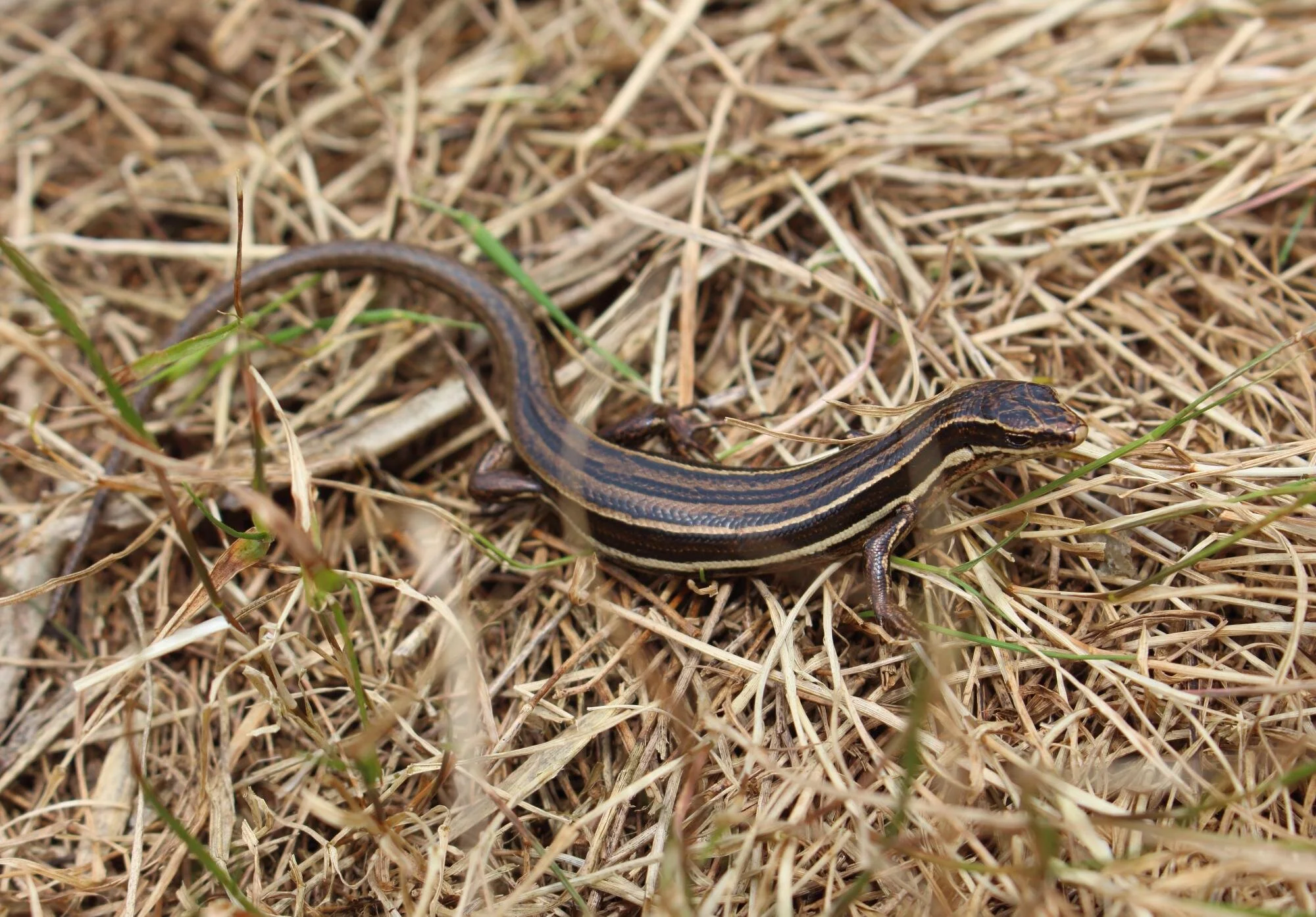Geckos and skinks – Jewels of the forest.
With the constant chatter of tui and the woosh of kererū wings never far from earshot, it’s no surprise that birdlife takes centre stage on Waiheke. But far below the aerial performance of birds, a much smaller and quieter native inhabitant is often hidden in plain view.
They are our reptilian residents, geckos and skinks (mokomoko in te reo Māori). Waiheke is home to four species of gecko; the brown and green mottled forest gecko, the pacific gecko, raukawa (previously common gecko) and the elegant gecko (previously known as the Auckland green gecko).
Also found on the motu is the copper (not to be confused with plague skinks), ornate skinks, and moko skinks. All the lizard species are declining in number across the Auckland Region with many threatened nationally.
To bring you up to speed on these unique creatures here are ten fun facts you may or may not know.
All endemic New Zealand geckos and skinks birth live young instead of laying eggs like most reptiles (except one, aptly named the egg-laying skink, which may have been present on Waiheke historically).
They are slow breeders. Geckos usually carry up to two young and breed only once every one to two years. While skinks have between three and six young at a time.
Non-native plague skinks (also known as rainbow skinks) lay up to eight eggs three times a year. Plague skinks can reach high population densities in a relatively short time, living up to their name. They are thought to be a threat to native species as they can compete for food, habitat, and space.
Endemic geckos and skinks have an impressive lifespan. Some geckos have been found to live for over 50 years in the wild.
Geckos fall into two groups, the bright green (occasionally bright yellow) which are active during the day and the grey or brown geckos with mottled patterns which are active at night.
Rats are one of the many threats to geckos and skinks.
Geckos are omnivores, they eat both insects and berries and nectar for a well-rounded diet.
The Auckland green gecko officially changed its name in 2014 to the elegant gecko which we think is right on point.
Skinks can give you a wink where geckos cannot. Geckos do not have moveable eyelids like skinks do and cannot blink, they instead lick their eyes to keep them clean.
New Zealand Geckos and Skinks are protected under the New Zealand Wildlife Act 1953, this means you cannot capture, collect or disturb native lizards from the wild (or even handle them).




Now that you’re more familiar with lizards on the island, let’s have a look at ways to help them thrive in their natural environment.
You can encourage geckos and skinks to visit your garden by providing large areas of dense, spreading shrubs, like coprosma and muehlenbeckia. These will not only provide safe cover but will also provide fruit and attract insects for them to feed on. Hunt through the woodpile for a half-rounds of bark and place it in a pile where plants can grow up around it, giving skinks and geckos a place to hide.
Skinks in particular love deep leaf litter so keep a corner of your garden dedicated to leaf disposal. For more tips on how to attract lizards to your garden click here, here and here
If you are lucky enough to find a New Zealand gecko or skink in your garden, remember human touch can damage their skin or cause them to panic and shed their tails which can take up to five years to regrow. So enjoy watching them but at a distance.
There is something you can do to minimise the spread of plague skinks too. They are notorious for laying eggs in potted plants, so when you bring new plants onto your property, submerge the pot in water for two minutes and skink eggs will float to the top. When buying plants, source them locally and from a reputable distributor, ask them if skinks are a problem and check drainage holes around roots and edges of the bags for the eggs. They are round and up to 10mm in size.
By working to remove predators from the island, there is a hope that Waiheke will become a place where lizard species not only survive but thrive.



